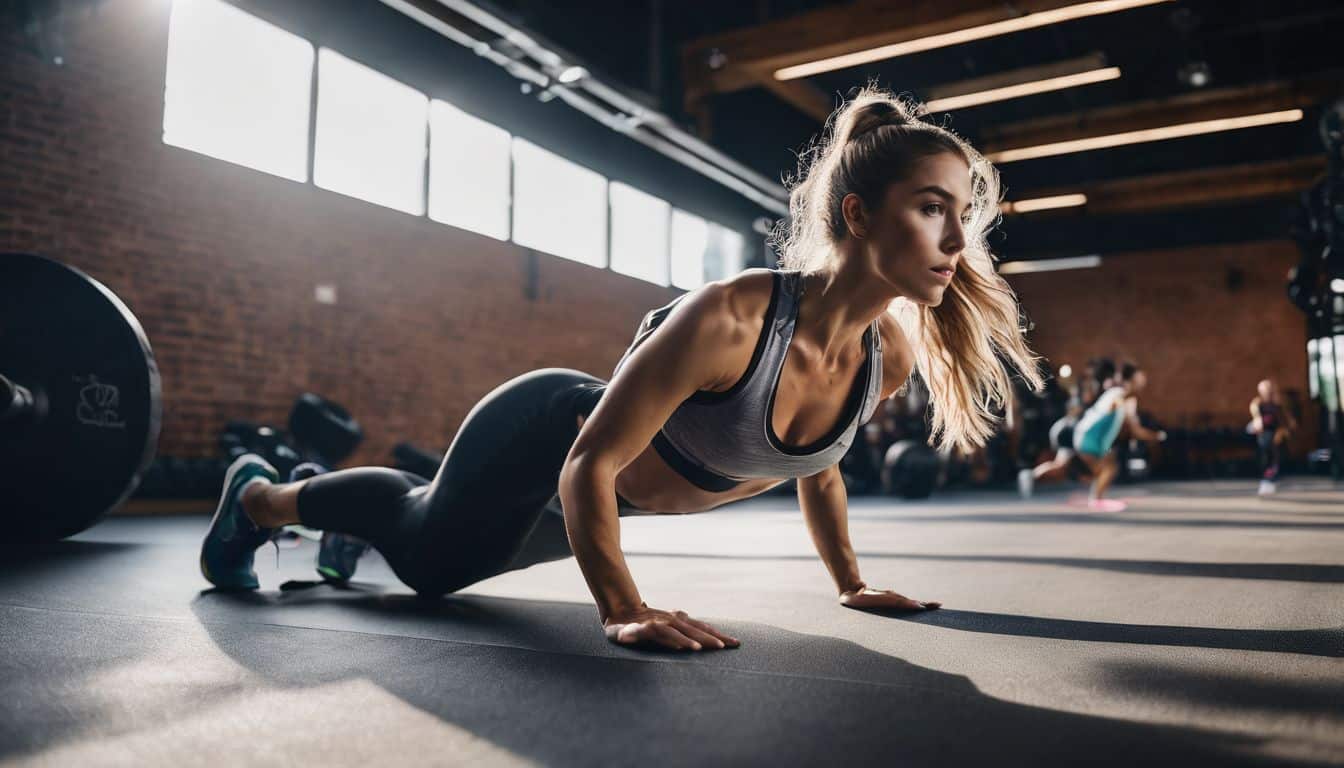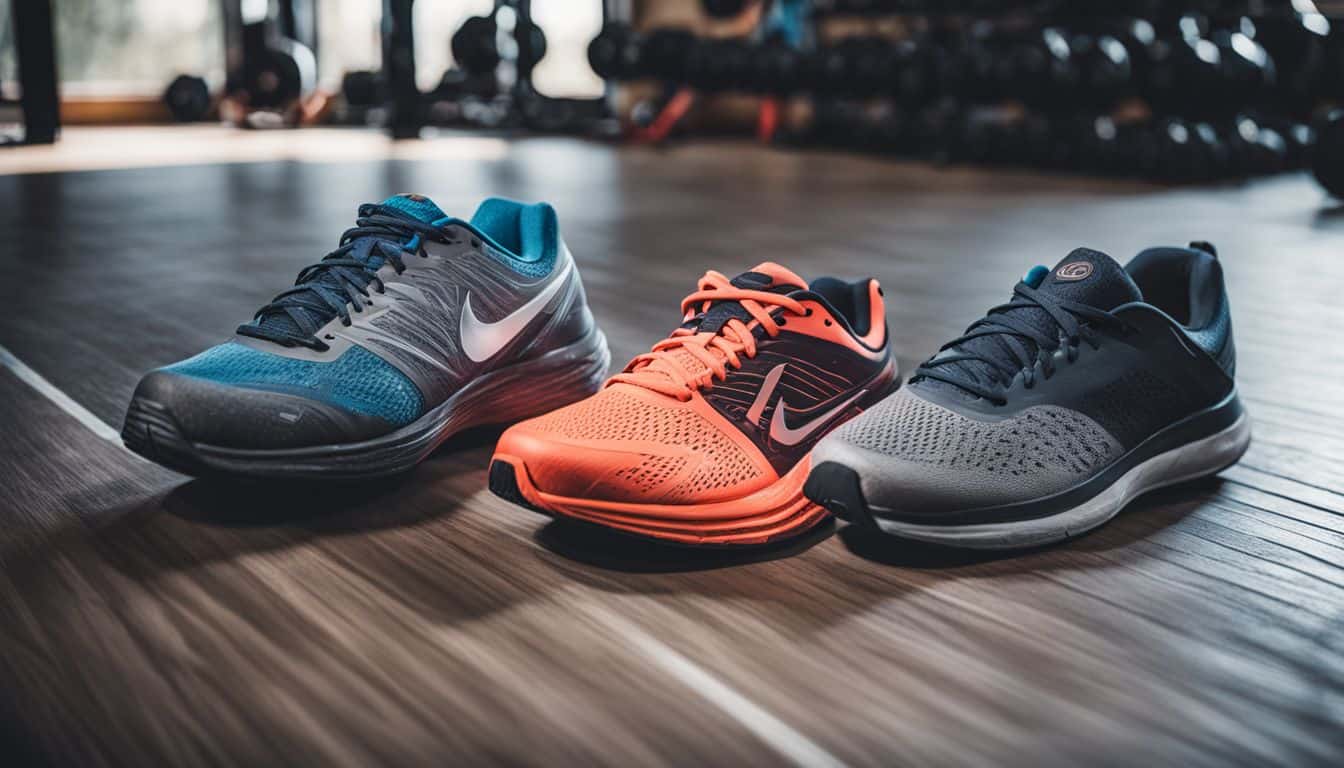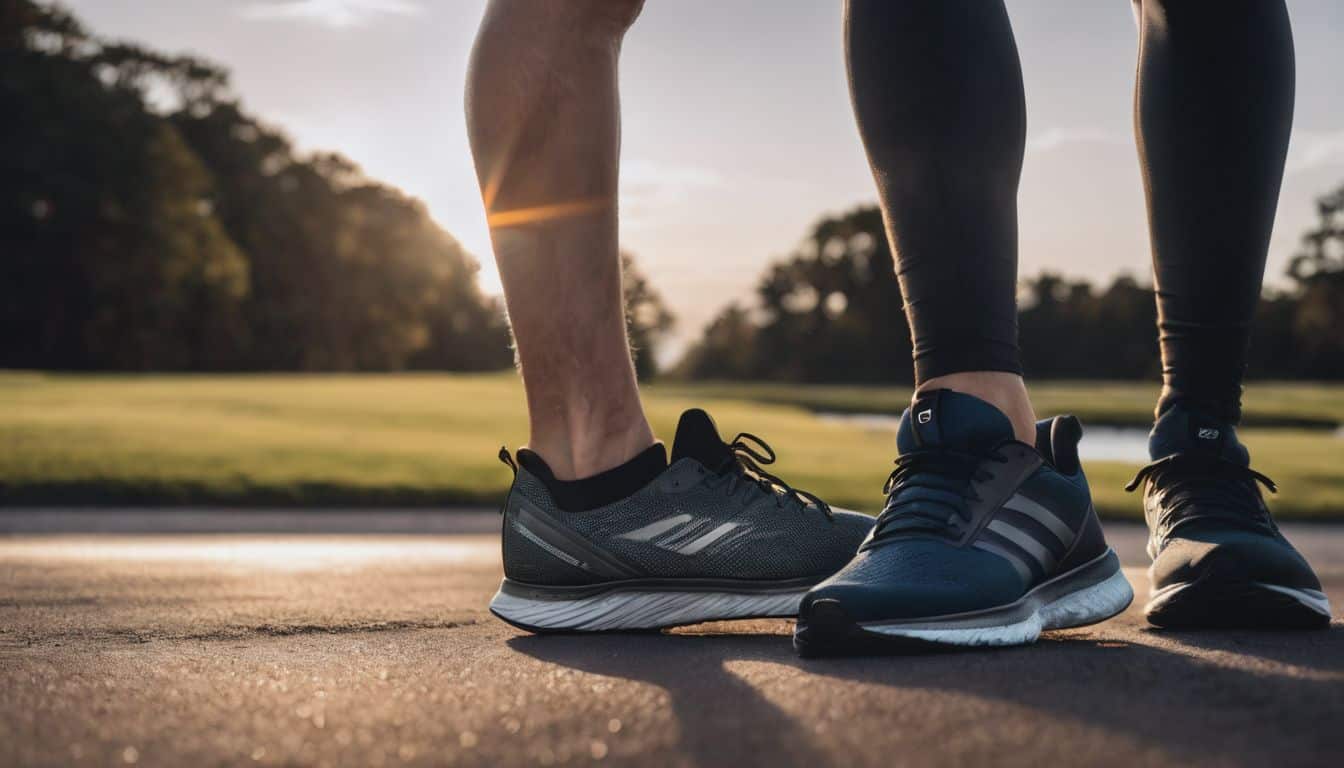Ever found yourself in the middle of a shoe store, lost in the maze of running shoes and cross-trainers? Trust me, you’re not alone. This question has kept me up at night too – can my cherished running shoes double as training kicks? While it might seem tempting given how they appear outwardly perfect, it’s important to remember that each shoe is crafted with particular intentions.
On my journey seeking answers, I unearthed some key differences between running shoes and cross-training ones that affect their functionality big time. In this article, we will dig into these insights together— shedding light on why each type uniquely matters and how choosing wisely can significantly reduce injury risk while boosting our performance levels.
Are we ready to hit the ground running (or training)?
Key Takeaways
- Running shoes lack the stability and support needed for cross-training, which involves side-to-side movements.
- Cross – training shoes are specifically designed to provide stability, security, and traction for various types of exercises.
- While it is technically possible to wear running shoes for cross – training, it may increase the risk of injury and limit performance.
- Investing in a pair of dedicated cross – training shoes is recommended to optimize performance and reduce the risk of injuries during workouts.
Differences Between Running Shoes and Cross-Training Shoes
Running shoes are specifically designed for the repetitive forward motion of running, while cross-training shoes need to provide stability, security, and traction for a variety of movements in different directions.
Lack of stability for cross-training
Running shoes lack the right support for cross-training. They are made to move straight on, not side to side. But many actions in cross-training need moving side to side. Without enough support, it’s easy to trip or slip and get hurt.
The midsoles of running shoes may break down pretty quick from all the hard work of cross-training too. For these reasons, gym shoes built for many sports can be a smarter pick than running sneakers for your workout routine.
Inadequate upper construction for security
Running shoes are not built like cross-training shoes. They lack the sturdy upper part that keeps our feet secure during workouts. This is because running is a forward motion. But, in cross-training, we move in all directions – left, right, up and down.
The top of running shoes doesn’t have enough support for side-to-side moves. The fabric can rip fast when used for high-energy tasks. Also, foot twists can happen more often due to this lack of side holding power.
Potential lack of traction in outsoles
Running shoes may slip during cross-training. This happens because of poor grip in the outsoles. Cross-training needs a lot of side-to-side moves. But, running shoes are made for front-to-back moves.
So, they don’t give good support for lateral movements. The design difference in outsoles is the reason. Lack of traction can lead to falls and harm you too. It’s best to wear the right shoes like cross-training ones for better grip and less risk of getting hurt.
Is It Ok To Wear Running Shoes For Cross-Training?

As a running enthusiast, you may be wondering if it’s okay to wear your running shoes for cross-training. Well, the answer is yes and no. While running shoes can technically be used for cross-training, there are some drawbacks to consider.
Running shoes are designed specifically for the repetitive motion of running. They tend to be lighter, more flexible, and more cushioned than cross-training shoes. This can make them great for activities like jogging or sprinting on a track.
However, when it comes to cross-training exercises that involve lateral movements or quick changes in direction, running shoes may not provide the necessary stability and support.
Cross-training shoes, on the other hand, are built with firmer midsoles and lateral support to handle various types of exercises like weightlifting, aerobics classes, or agility training.
So while it’s okay to occasionally wear your running shoes for cross-training workouts that don’t involve too much side-to-side movement or high-impact activities, having a pair of dedicated cross-training shoes would be ideal for maximizing performance and reducing the risk of injury during your workouts.
It’s important to listen to your body and choose appropriate footwear based on your specific activity needs. If you regularly engage in both running and cross-training exercises, investing in separate pairs of shoes tailored for each activity will allow you to perform at your best while minimizing any potential risks associated with wearing improper footwear.
Choosing the Right Shoe for Cross-Training
When it comes to cross-training, choosing the right shoe is crucial for optimal performance and injury prevention. Find out why running shoes may not be the best option and discover what factors you should consider when selecting your perfect cross-training shoe.
Don’t miss out on this important information!
Importance of stability and support
Having stability and support in your cross-training shoes is crucial for a successful workout. When you’re engaging in various activities like weightlifting, jumping, or lateral movements, you need shoes that can provide the right level of stability to keep you balanced and secure.
Without proper support, your feet may feel wobbly and unstable during quick direction changes or intense movements. This can increase the risk of injuries such as ankle sprains or falls.
Additionally, having adequate support in your shoes helps maintain optimal foot alignment, preventing overpronation or supination that can lead to discomfort and potential injury. So when choosing cross-training shoes, make sure they offer the stability and support needed for your specific activities to enhance performance and protect yourself from unnecessary risks.
Considerations for different activities
As a running enthusiast, it’s important to consider different activities when choosing the right shoe for cross-training. Here are some key things to keep in mind:
- Road-running: If you enjoy running on pavement or other hard surfaces, look for shoes with cushioning and shock absorption. These features will help protect your joints from the impact of each step.
- Trail-running: For off-road adventures, opt for shoes with a more aggressive tread pattern. This will provide better traction and stability on uneven terrain.
- High-intensity workouts: If you frequently engage in high-intensity exercises like HIIT (high-intensity interval training) or plyometrics, choose shoes that offer good support and stability. This will help prevent ankle sprains and other injuries during quick movements and direction changes.
- Strength training: When lifting weights or doing strength exercises, look for shoes that have a flat sole or minimal heel drop. This will provide a stable base for better balance and power transfer.
- Indoor classes: If you participate in indoor classes like aerobics or dance workouts, go for shoes that have good lateral support. This will help prevent your feet from sliding or rolling during side-to-side movements.

Potential Risks of Using Running Shoes for Cross-Training
Using running shoes for cross-training can increase the risk of injury and limit your performance. Find out why in our latest blog post!
Increased risk of injury
Wearing running shoes for cross-training can increase the risk of injury. Running shoes are designed specifically for forward motion and lack the necessary stability and support for lateral movements involved in cross-training activities.
This can lead to ankle sprains, twists, and other injuries. In addition, running shoes may not provide adequate cushioning or shock absorption needed for high-impact exercises like jumping or weightlifting.
It’s important to choose the right shoe for each activity to minimize the risk of injury and ensure optimal performance.
Reduced performance and effectiveness
Using running shoes for cross-training can lead to reduced performance and effectiveness during your workouts. Running shoes are specifically designed for the repetitive motion of running, with features like cushioning and a flexible sole that absorbs impact.
However, when it comes to cross-training, which involves a variety of movements such as jumping, lateral side-to-side movements, and weightlifting exercises, running shoes may not provide the necessary stability and support.
This lack of support can result in decreased performance and potential discomfort or even injury during your cross-training sessions.
To get the most out of your cross-training workouts, it’s essential to wear the right shoe for the job. Cross-training shoes are specifically designed for multi-directional movements and offer more support in different areas – think stability during side lunges or grip while doing agility drills.
By wearing proper cross-training shoes instead of running shoes, you can improve your performance by having better traction on various surfaces (both indoor and outdoor) as well as ensuring adequate support for all types of movements involved in your training routine.
Conclusion
In conclusion, wearing running shoes for cross-training is not ideal. Cross-training shoes offer the stability and support needed for a variety of activities, while running shoes may lack these features.
It’s important to choose the right shoe for each specific activity to reduce the risk of injury and maximize performance.
FAQs
1. Can I wear running shoes for cross-training?
Yes, you can wear running shoes for cross-training as long as they provide the necessary support and stability for lateral movements.
2. What is the difference between running shoes and cross-training shoes?
Running shoes are designed specifically for forward motion, while cross-training shoes are versatile and designed to support various types of movement, including side-to-side movements.
3. Are there any disadvantages to wearing running shoes for cross-training?
Wearing running shoes for cross-training may not provide optimal support and stability for certain activities that involve lateral movements or weightlifting exercises.
4. Should I invest in specific cross-training shoes if I regularly do different types of workouts?
Investing in specific cross-training shoes is recommended if you regularly engage in a variety of workouts that involve different types of movements, as they will provide better overall performance and reduce the risk of injuries.
5. Can I use my old worn-out running shoes for cross-training?
Using old worn-out running shoes for cross-training is not recommended as they may lack the necessary cushioning, support, and traction needed for effective and safe training sessions.





Leave a Reply